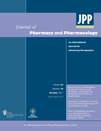Acteoside inhibits melanogenesis in B16F10 cells through ERK activation and tyrosinase down-regulation
Abstract
Objectives Acteoside is a phenylpropanoid glycoside extracted from the leaves of Rehmannia glutinosa that displays various biological activities. In this study, we tested the effects of acteoside on tyrosinase activity and melanin biosynthesis in B16F10 melanoma cells. We also explored molecular mechanisms for the inhibition of melanogenesis observed, focusing on the signalling pathway of extracellular signal-regulated kinase (ERK).
Methods The effects of acteoside were determined using several cell-free assay systems and B16F10 melanoma cells for melanin content and tyrosinase activity. To investigate effects on melanogenic regulatory factors we performed reverse transcription polymerase chain reaction, cAMP assay and Western blot analyses.
Key findings Acteoside showed an inhibitory effect on tyrosinase activity and melanin synthesis in both cell-free assay systems and cultured B16F10 melanoma cells. Acteoside decreased levels of tyrosinase, tyrosinase-related protein-1 (TRP-1) and microphthalmia-associated transcription factor (MITF) proteins, whereas it increased ERK phosphorylation. A specific ERK inhibitor, PD98059, abolished the acteoside-induced down-regulation of MITF, tyrosinase and TRP-1 proteins. The ERK inhibitor increased tyrosinase activity and melanin production and reversed the acteoside-induced decrease in tyrosinase activity and melanin content. In addition, acteoside suppressed melanogenesis induced by α-melanocyte-stimulating hormone and showed UV-absorbing effects.
Conclusions Acteoside decreased tyrosinase activity and melanin biosynthesis in B16F10 cells by activating ERK signalling, which down-regulated MITF, tyrosinase and TRP-1 production.




